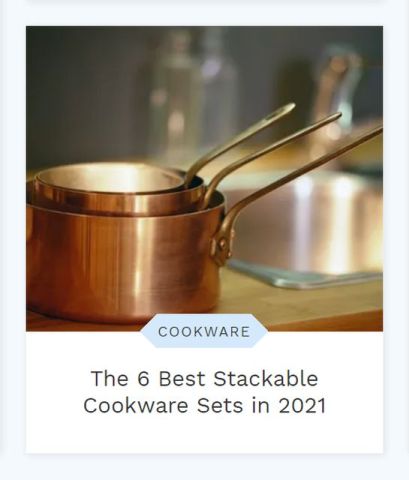
Our Montana heatwave rolls on, so I’m moving as may food projects as I can out of the hot kitchen to a shady, breezy space. Fortunately, there are plenty of options when cooking outdoors. As I blogged about all last month, a grill is my favorite summertime tool. It adds another layer of flavor whether I’m cooking a meal, preparing food for the freezer and midwinter use, or firing off rounds of vegetables to stockpile for canning.
But the grill is just one of my outdoor cooking tools. Aboard The Blue Mule, we carry a grill, a two-burner camp stove, and a Jetboil backpacking stove, covering every cooking need while on the water. At home, large canning sessions happen outdoors on a heavy-duty, two-burner cooker. The most recent addition to my cooking arsenal has been a portable electric burner. As long as I have access to a flat surface and an electrical outlet, I can set up this burner for Twice as Tasty live events, workshops, or anywhere else I want to go.
Off the blog, I’ve been researching the best portable burners for The Spruce Eats. My latest lineup has been focused on induction models.
Portable Burners for Cooking

All portable burners in my newest piece on The Spruce Eats require induction-compatible cookware. The options are more varied than you might expect, and you likely already have some of them in your kitchen. Any pot or pan made of magnetic stainless or carbon steel, standard and enameled cast iron, or cast aluminum with an induction-ready base can be used on an induction burner.
The “magnetic” part is key: It’s what makes induction burns so energy efficient as they transfer heat directly from the burner coils to the pot. To check if a pot or skillet already in your collection would work on an induction burner, simply hold a refrigerator magnet to the cookware’s base. If the magnet sticks, the pot’s induction friendly.
Even if you have suitable pots and pans for a portable induction burner, to truly cook on the go you may want ones that stack neatly and compactly. One of my other recent articles has several options for space-saving, stackable cookware that would sit nicely on one of these induction burners:
- Gotham Steel Stackmaster 10-Piece Cookware Set
- Anolon SmartStack 11-Piece Cookware Set
- Calphalon Select Space-Saving 10-Piece Cookware Set
I purchased the Anolon collection to replace our cabin’s worn-out cookware and have been happy with it so far. The smaller pans and skillets stack neatly enough that they could be paired with a portable burner and taken on the road. The larger pots take up enough space that I wouldn’t travel with them unless I knew exactly what I needed to put in them.
Portable Burners for Canning

Last month, I published a roundup of the best portable electric burners on The Spruce Eats. One of the ones that intrigued me the most was a portable burner that could handle the weight of a canning kettle. For years, I canned almost exclusively outdoors because my glass-top stove didn’t have the power and couldn’t handle the weight of a canning kettle. I’ve moved most of my canning indoors after installing a new gas stove last year, but some two-person projects still end up outside because of the lack of elbow room in my tiny kitchen.
So a portable electric burner is an intriguing option. In my research, it became clear that two factors were key if you wanted to do anything beyond heating a one-pot meal or keeping food hot for a buffet: burner diameter and load capacity. But these details aren’t always included in the sales info for portable burners. So I dug deeper to find that information for each burner in my lineup.
Not surprisingly, few could hold a pot as heavy and large as a canning kettle. Of the ones that made the final cut for my best portable electric burners article, only one could take the oversized load: a newer model in Aervoe’s Max Burton line of portable induction burners.
An induction burner is incredibly energy efficient, but it requires an induction-friendly pot. When it comes to canning, I learned earlier this year that both water-bath and pressure canners come in induction-compatible versions. So it’s possible to create an entire portable, energy-efficient canning setup. Here’s what you’d need:
- Presto 01784 23-Quart Pressure Canner (be sure you’re buying the 01784 model that’s induction compatible rather than the standard 23-quart canner)
- Roots & Branches Stainless Steel Multi-Use Canner
- Max Burton 6600 18XL Digital Induction Cooktop
With a few induction-compatible pots and pans, and you’re all set for outdoor cooking too.
Of course, the cost adds up, especially if you already have a function canning setup. But this trio is on my radar for a future upgrade.
Twice as Tasty
 I hope you’re enjoy reading my off-the-blog pieces; I have such fun writing them. Keep your eye on The Spruce Eats for fresh articles from me in the coming weeks, with features on canning cookbooks, pressure canners, and more. I’ll share more pieces here once they go live.
I hope you’re enjoy reading my off-the-blog pieces; I have such fun writing them. Keep your eye on The Spruce Eats for fresh articles from me in the coming weeks, with features on canning cookbooks, pressure canners, and more. I’ll share more pieces here once they go live.
Looking for fresh recipes for your outdoor meals? Click here to order a personally signed, packaged, and shipped copy of The Complete Guide to Pickling directly from me. At the same time, pick up The Pickled Picnic, a digital collection that comes in an easy-to-read PDF format, uses pickles and leftover brine in a range of recipes, and is available exclusively through Twice as Tasty.

The only issue I found with canning outside was regulating the pressure on the gauge only canner when the breezes would start and stop. The weighted pressure regulator canner had no such problem.
Rather than build a breeze proof enclosure, I converted my gauge only canner to a weighted pressure regulator.
LikeLike
Sounds like great solution! I haven’t been pressure canning outside because my cooker burners are too powerful and might warp the canner, but I can see where that would make it challenging.
LikeLike